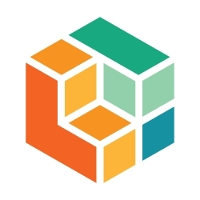Here at LookThink, we’re big on making user experiences better - not just through good design but also by incorporating usability into our design and development process. As we’ve said before, making “things” (products, platforms, websites, apps, customer experiences) more usable saves you (and your customers) both time and money and gives you a competitive edge.
SO...WHAT IS “USABILITY”?
Basically, usability is a quality attribute that helps determine how easy an interface (process, or tool, or product, or anything really) is to use. And we mean anything... whether it’s improving an air traffic control system, making it easier for a traveler to reschedule a missed flight, or making your business problem less of a barrier for your customers - if we’ve done our job, you don’t even know you needed us. To do that, we apply different user research and evaluation methods to talk to and observe actual users - not just internal staff from Business or Marketing.
OUR PROCESS
We’ve discussed/explained the value of incorporating user research into every technology project that we do. But what does user research and evaluation actually look like? In almost all of our projects, we incorporate it by:
- Learning about users. These are our clients’ customers. They should have the biggest say in how the end product or experience is designed.
- Learning the business environment. We need to know what the competition looks like, challenges this type of business faces, and overall industry trends in order to design a usable product.
- Conducting some task and information analysis. What will users need or want to do? In what order? Under what constraints?
- Evaluating our designs in progress. Once the design and development is underway, we constantly vet our direction with users. Is all our work meeting their needs?
- Evaluating usability results. Through reporting, analytics, user testing, customer feedback, is the new [product] meeting the user needs and goals it’s intended for?
OUR APPROACH
| When we hear you say... | We're thinking... |
|---|---|
| Why aren't people using my portal? |
|
| Why is the call center so busy when the answers are on our site? |
|
| Should we even go to market with this product? Do people want it? |
|
| Is this redesign a significant improvement? How do we know? |
|
| We don’t know what we need! |
|
In our next blog post, we’ll talk about how we actually DO usability: how to determine scope, any constraints, and choosing appropriate methodologies.
THANKS TO:
Quesenbery, Whitney. “Choosing the right usability technique: Getting the answers you need.” User Friendly 2008 Workshop. Accessed June 15, 2016. http://www.wqusability.com/handouts/righttechnique-uf2008.pdf.
Nielsen Norman Group. “Usability 101: Introduction to Usability.” January 4, 2012. Accessed June 15, 2016. https://www.nngroup.com/articles/usability-101-introduction-to-usability/.
